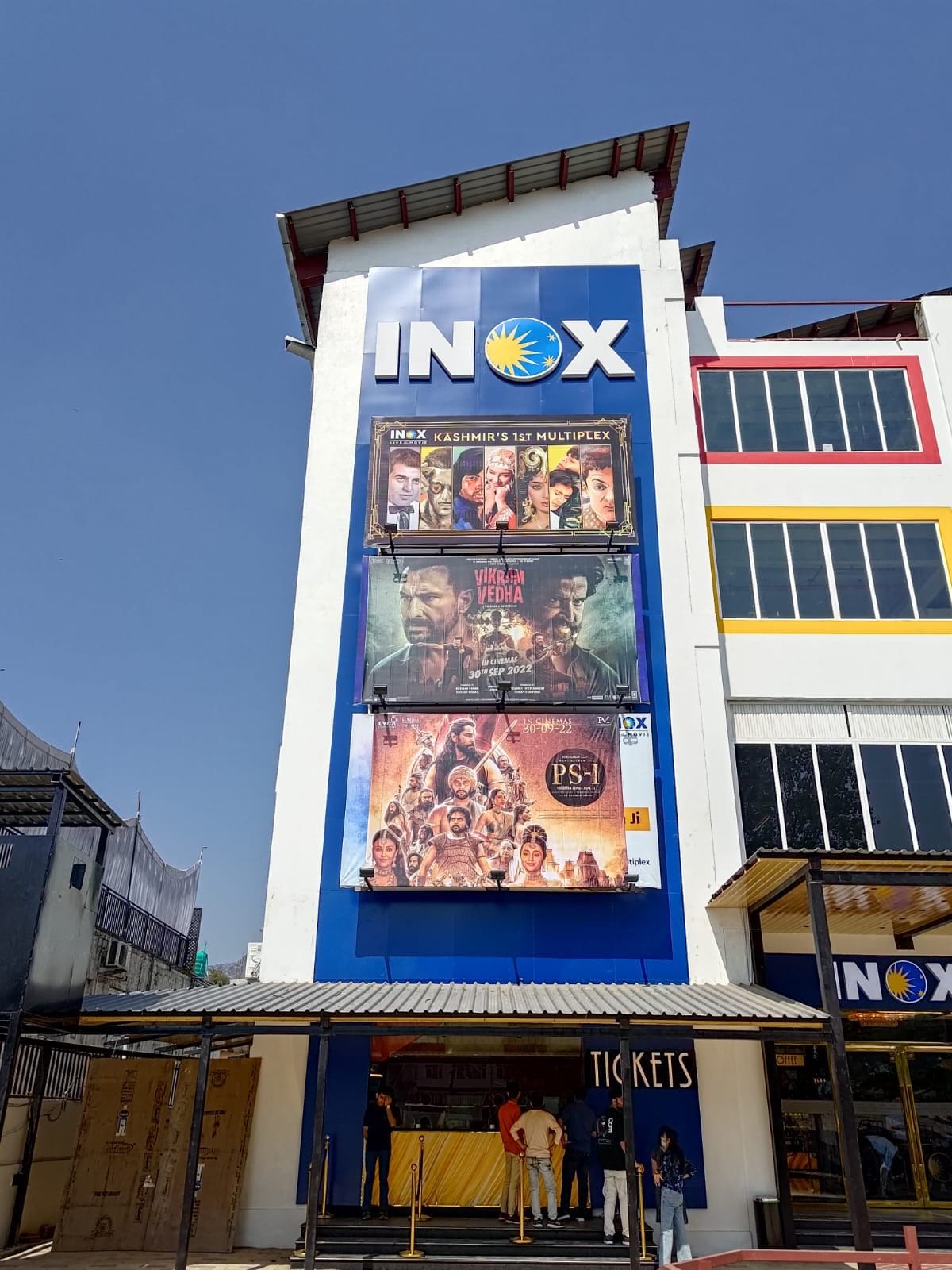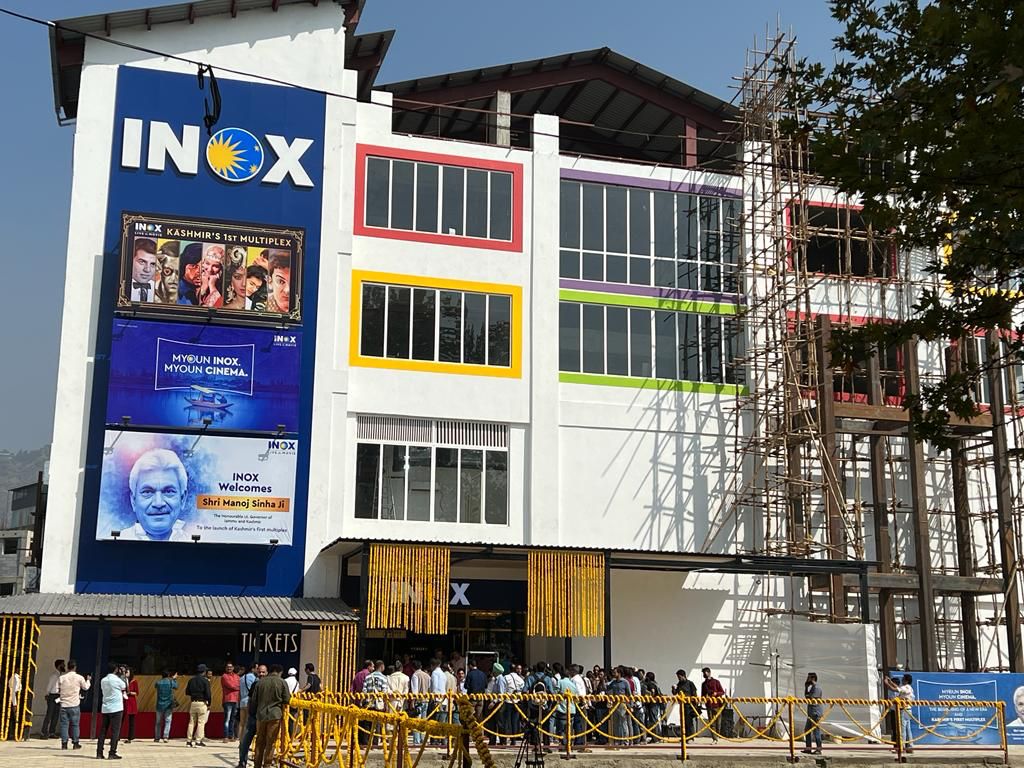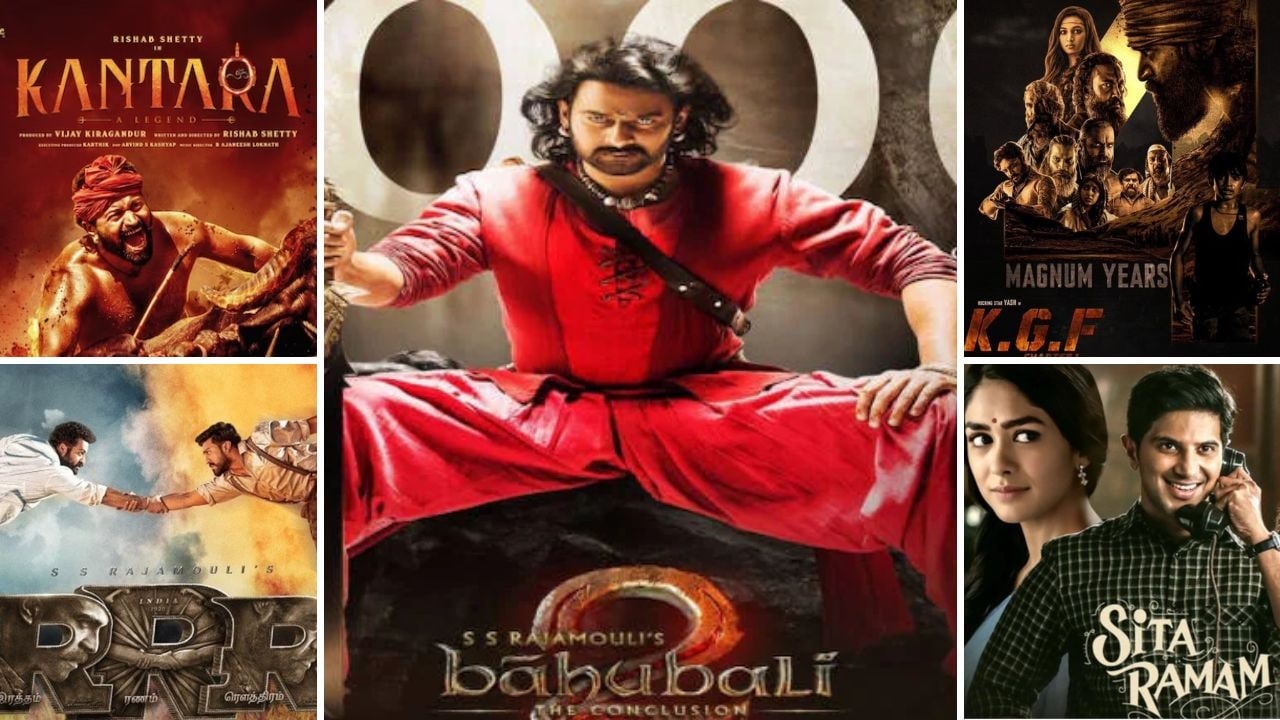RRR’s much acclaimed song ‘Naatu Naatu’ has gone on to win an Oscar for the “Best Original Song” at the 95th Academy Awards.
March 2022 marked the release of SS Rajamouli directed film RRR. Since then, there has been no looking back for this Telugu language film. Apart from its storyline, the film has been receiving standing ovation from the global audience for its much acclaimed song “Naatu Naatu”. The song has won not just at the Golden Globes, but was also awarded the ‘Best Song’ at the Critics’ Choice Awards and the Hollywood Critics Association.
When Inox opened its gateway to cinema lovers in Srinagar’s Shivpora locality on September 18, 2022, students from south India at the National Institute of Technology (NIT) and other educational institutions in Kashmir dropped in batches of 60-100 each.
Ponniyin Selvan: 1 (PS1) entertained them in the original Tamil language. Other language movies were also screened. Vikas Dhar, the managing director of Taksal Hospitality, the parent company of the multiplex, recalled this incident while speaking to Storyboard18.
The film distributor for PS1 in Jammu & Kashmir, who requests anonymity, recalls another moment. Since PS1 was not advertised on a grand scale in Kashmir and the Hindi remake Vikram Vedha’s lead actors, Saif Ali Khan and Hrithik Roshan, had a huge fan following in the region, what came as a surprise was 279 people making their way to the multiplex.

Keeping the box-office numbers of the film confidential, Dhar says: “After the success of Baahubali: The Beginning, Pushpa: The Rise and RRR, a kind of ‘fandom’ for the South Indian stars, got established in Kashmir.”
Actors like Rana Daggubati, Allu Arjun, Samantha Ruth Prabhu and Rashmika Mandanna became well-known. “What is astonishing is that the south Indian producers and directors also become familiar here. PS1 performed decently among Kashmiris, too. ”
Does this indicate a developing taste for south Indian genre in a place where, according to 2022’s media report, 74 percent of the population speak Dogri and Kashmiri, and the craze for Bollywood is still fresh?
Read More: The rise of South Indian Cinema: How Southern movies are going national
How did this interest develop?
It was the year 2010. A 17-year-old boy, Tufail Mattoo, was gunned to death when security forces aimed a teargas canister at him. This gave rise to a political uprising, which further led to the disablement of the internet in the region, and people spending a larger part of their time, confined in their homes.
Local cable television channels like SEN and WADI played only south Indian films. This is how Kashmiris got the taste of a genre which was way beyond Tamil actor Rajinikanth’s moves and his iconic dialogues.
The incidents surrounding the death of Hizbul Mujahideen commander Burhan Wani in 2016, and the abrogation of Article 370 in 2019 led to the disablement of the internet in the region, which further fuelled the viewership.
Junaid Rather, former station producer at BIG FM in Srinagar, credits veteran actor Rajinikanth for creating a sense of familiarity around south Indian content through his movies. Apart from television, people watched movies via pen drives or bluetooth, which further improved its visibility in the region.
Rahul Nehra, founder and managing director of Jadooz, a Chennai-based entertainment startup, seconds Rather. He cites the example of east Uttar Pradesh, i.e., the Bhojpuri belt, where there are hardly any cinema halls.
There, people consumed content via mobile phones, and explored varied options on YouTube when there were limited Hindi content available on the platform.
“Interestingly, wherever cinema halls are not there, there has been an offtake of south Indian films. In the Bhojpuri belt, the locals would keep a tab on when Tamil actor Suriya’s films would be released,” he said.
Apart from television, people watched films through pirated DVDs. This reflected in an annual loss suffered by the Indian entertainment industry, which mounted up to $2.8 billion revenue, as per a 2022 media report.
Jadooz, which sets up mini theatres in Tier 2 and 3 cities, i.e., the rural pockets, established two mini theatres in J&K’s Pulwama (city) and Shopian (town) last year on September 18.
In Kashmir, the lead actor of Baahubali (Part 1 and Part 2), Prabhas enjoys a great fan following. Not just that, its stellar cast also are well-known, all thanks to the film’s massive popularity.
Abdul Karim, deputy manager, operations, Wave Cinemas, in Jammu, agrees. An occupancy of more than 70 percent was witnessed when the film was screened. Since then, south Indian films, dubbed in Hindi, started to be screened.
The success of the film also set off a chain of popular Telugu-dubbed Hindi films being released on YouTube. Some of the popular films like Jaya Janaki Nayaka (Khoonkar), Sita Rama (Sita), Nenu Sailaja (The Super Khiladi 3) and A Aa (A Aa) raked in 690 million, 570 million, 530 million and 487 million viewers on YouTube respectively, a recent media report states.
Read More: How meat unicorn Licious is going regional and cracking Southern markets
Television: How it improved viewership base
As far as one can recollect, the early 2000s were a period when television channels, especially Zee Cinema, began to air south Indian films, dubbed in Hindi.
Actors like Chiranjeevi, Ramya Krishnan, Pawan Kalyan, and Venkatesh Daggubati are a few whose movies entertained the masses.
Then in 2005, the dubbed version of Tamil film Chandramukhi, as per a report, gained widespread appreciation. Dhar points that the genre’s viewership began to pick up when they started to be dubbed.
To support this further, a research paper, ‘How dubbing has contributed to the growth of south Indian movies’, mentions that, “around 2010, so large was the demand from satellite television channels that south Indian films began to be dubbed into Hindi for a direct-to-television release.”
Local cable television channels like SEN and WADI played only south Indian films. This is how Kashmiris got the taste of a genre which was way beyond Tamil actor Rajinikanth’s moves and his iconic dialogues.
When Baahubali 2: The Conclusion was aired on Sony Max, an impression of 26,054 was registered. On the other hand, its prequel, Baahubali: The Beginning, saw an impression of 8,588,000, media reports state.
According to latest media reports, upon the premiere of RRR on Zee Network, it garnered a TRP of 5.00. KGF-2 raked in a TRP of 3.84 on Sony Max and Karthikeya 2 registered a rating of 1.70 on Zee Cinema.
Apart from television, people watched films through pirated DVDs. This reflected in an annual loss suffered by the Indian entertainment industry, which mounted up to $2.8 billion revenue, as per a 2022 media report.
Will OTT dent viewership in cinema halls?
At the onset of COVID-19, the theatre business was hit severely and an unprecedented rise in the viewership of content on OTT platforms was seen. Dhar credits the medium in expanding the audience base of south Indian films. As per a recent report, in FY22, the video OTT market was worth around Rs 24,909 crore. By FY 2027, it is expected to reach Rs 58,121 crore.
As per Ernst and Young’s 2022 report ‘Tuning into Consumer’, in 2019, box-office collections contributed 60 percent to cinema’s revenues. By 2024, it is expected to reduce to 50 percent.
But Dhar opines that the audience for OTT and cinema halls are poles apart. Hence, that dispels the fear of people not making it to the theatres, since it is a novelty for the locals to watch a big screen after three decades.
South Indian films: What is the appealing factor?
During the screening of RRR and KGF, Jammu’s Wave Cinemas witnessed an occupancy of 55-60 percent and 65-70 percent occupancy, respectively.
When Pushpa: The Rise was screened, more than 40-45 percent made their way to cinema halls. In the case of Kantara, though the crowd was few in numbers initially, after a week, more than 37 percent occupancy was registered.
“Interestingly, wherever cinema halls are not there, there has been an offtake of south Indian films. In the Bhojpuri belt, the locals would keep a tab on when Tamil actor Suriya’s films would be released,” Rahul Nehra, founder and managing director, Jadooz
When Inox multiplex screened Kantara, Kashmiris did not give it a miss. Some of them did not understand it, and some appreciated the storyline. This revolved around a larger-than-life-size hero from south India. Hence, people made their way to watch the film once again. The audience at Jadooz comprises officials from the administration, army men, school children and elders.
In the words of Jadooz’s Nehra, Kantara was played on demand. There were around 3-4 screenings, where an audience of 250-300 assembled in the 70- seater mini theatre.
Coming back to Wave Cinemas, more than 50 percent of the crowd chose not to miss the screening of KGF-2. The film distributor highlights that, in the first week, a crowd of 1,216 came to watch PS1. In week 2, it was 503. In PVR Jammu, the number stood at 657.
At Movietime Jammu and Apsara Cinema, the crowd was 243 and 205, respectively.
At Wave Cinemas, though there is a fixed set who arrive, the main audience are the youth.
So, one can derive that content rich in masala, and rooted in culture are the most preferred. Storyline, which is mired in religion, politics and casteism, doesn’t appeal to Jammuites and Kashmiris.
However, Jawaharlal Nehru University’s (JNU) PhD scholar in cinema studies, Niyati Bhat is of the opinion that such films perpetuate a sort of toxic masculinity.
How does the future look like?
In the 1990s, cinema halls had to down shutters following the Kashmir insurgency in 1989. In Srinagar, which housed cinema halls like Firdaus, Shiraz, Khayam, Naaz, Neelam, Broadway, Regal and Palladium, attempts were made in 1999 and 2005 to re-introduce the cinema culture. However, this did not reap in the desired results.

When Inox multiplex welcomed the general public, it was a homecoming moment for the Dhar family, who owned the now-defunct Broadway.
Jadooz’s Nehra says they are coming up with a theatre in Baramulla, Pukhwara, Bandipore and Udhampur. Though they have not shown too many south Indian films and have screened Hindi films like Brahmastra and Bhaag Milkha Bhaag, they are screening one movie at a time, owing to the issues surrounding the medium of entertainment that have plagued the region.
In the words of Jadooz’s Nehra, Kantara was played on demand. There were around 3-4 screenings, where an audience of 250-300 assembled in the 70- seater mini theatre.
It is expected that the startup will come up with six screens by this month. “We intend to do a Kashmir film festival this month or in March. We may come up with a couple of Kashmiri films and children’s movies, which can get the various strata of followers into the theatres,” he says.
Since the Bollywood film Pathaan hit the screens on January 25, it took the excitement of Kashmiris to another level, where they waited in queue to get hold of a ticket and watch their favourite star on the big screen. According to a Moneycontrol report, 8,000 tickets were sold with all the three cinema halls, with a seating capacity of 520, running house full.
JNU’s Bhat states that at least one year is needed to analyse and assess how the cinema-going culture would be influenced, and how movies would fare in the region.
If a mass-appealing film with the star power of Shah Rukh Khan can bring audiences back to the theatres in the valley, there is hope for south Indian films as well which won’t lose its steam anytime soon, she concludes.
